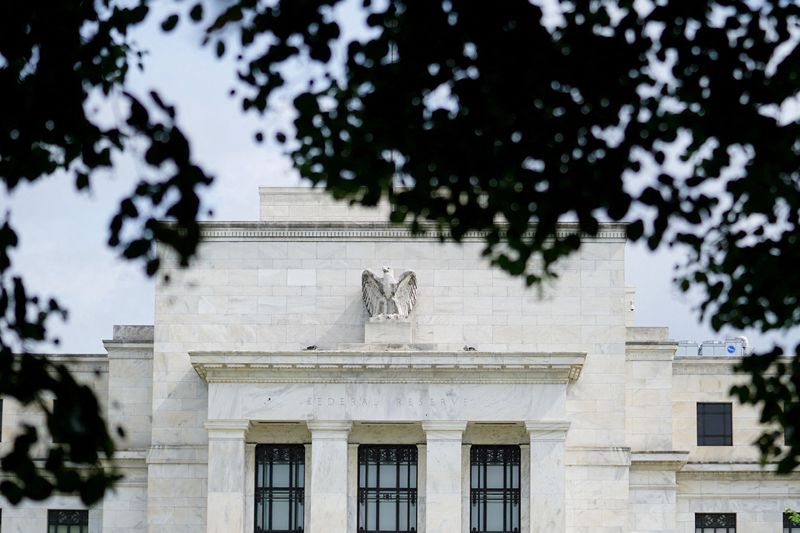The outlook for U.S. and global markets is poised for volatility as futures pricing responds nervously to recent economic data, specifically the September inflation report. The report revealed an unexpected uptick in the annual core inflation rate to 3.3%, which has cast doubt on the Federal Reserve’s plans for future interest rate cuts. This uncertainty is compounded by an increase in weekly jobless claims, influenced by disruptions from ongoing strikes and storm-related issues. In this scenario, some Federal Reserve officials, including Atlanta Fed President Raphael Bostic, have suggested that it might be prudent to pause interest rate adjustments in November until clearer data emerges. Although there is still around an 80% probability priced in for a quarter-point rate cut, the meeting’s timing—two days after the U.S. election—adds a layer of complexity, as policymakers might be influenced by the political climate.
Amid this backdrop, more economic data, including the producer price index (PPI), is expected to provide further insights into inflation trends. Economists predict that annual core PPI inflation will rise slightly to 2.7%, which may be seen as a sign of underlying inflation pressures, even as headline rates are expected to dip below 2%. The bond market reflects this mixed sentiment, with 10-year Treasury yields stabilizing while two-year yields fell below 4%. The dollar index also saw a minor retreat from its recent highs, indicating shifting investor sentiment. Additionally, geopolitical tensions, particularly in the Middle East, are keeping energy markets on alert, although oil prices remain relatively stable around $75 per barrel, in part due to assessments of Hurricane Milton’s impact in Florida.
Despite these uncertainties surrounding interest rates and inflation data, U.S. stock markets showed resilience, only slightly retracting from recent record highs. The third quarter earnings season is beginning, with major banks like JPMorgan, Bank of New York Mellon, and Wells Fargo scheduled to report their earnings shortly. Early estimates suggest that S&P 500 earnings growth may slow to 5.3% compared to the previous year, down from a 13.2% growth in the second quarter. The technology and communication services sectors are predicted to lead growth with increases of around 12-15%, while financials may struggle with less than 2% growth. The corporate earnings reports will be pivotal in determining market sentiment and direction in the coming days.
Internationally, markets are reacting to various domestic economic developments. Hong Kong markets were closed for a holiday, while mainland China’s index fell ahead of a significant press conference expected to discuss fiscal stimulus measures in tandem with the recent monetary easing from Beijing. In South Korea, the won strengthened after the central bank’s ‘hawkish cut’ of interest rates by a quarter-point, signaling a new phase of easing. Conversely, Japan’s Nikkei index experienced gains, while European markets remained stable, keeping an eye on the implications of France’s budgetary plans which include significant spending cuts and tax hikes.
The approval of France’s budget, which amounts to around 60 billion euros in proposed cuts, raises questions about legislative support, especially in a divided parliament. Markets are awaiting a critical assessment from Fitch regarding France’s sovereign credit rating. European bonds are steady, while the euro has gained slightly against the U.S. dollar. Additionally, the European Central Bank is anticipated to announce further interest rate cuts, possibly the third time this year, adding another layer of complexity to the European financial landscape.
As Friday unfolds, market participants will be closely monitoring several key developments, including the U.S. September producer price inflation report and the University of Michigan’s October sentiment survey. Other important metrics include Canada’s employment report and Mexico’s industrial output data. Meanwhile, notable Federal Reserve officials are scheduled to speak, potentially offering additional insights into future monetary policy directions. The geopolitical scene remains dynamic as well, with Ukrainian President Volodymyr Zelenskiy scheduled to meet Chancellor Olaf Scholz in Berlin, while Russian President Vladimir Putin engages with Iran’s President Masoud Pezeshkian, highlighting the ongoing global complexities influencing markets. Overall, the mix of economic indicators, corporate earnings, geopolitical tensions, and upcoming Federal Reserve decisions will collectively shape market trajectories in the near future.

